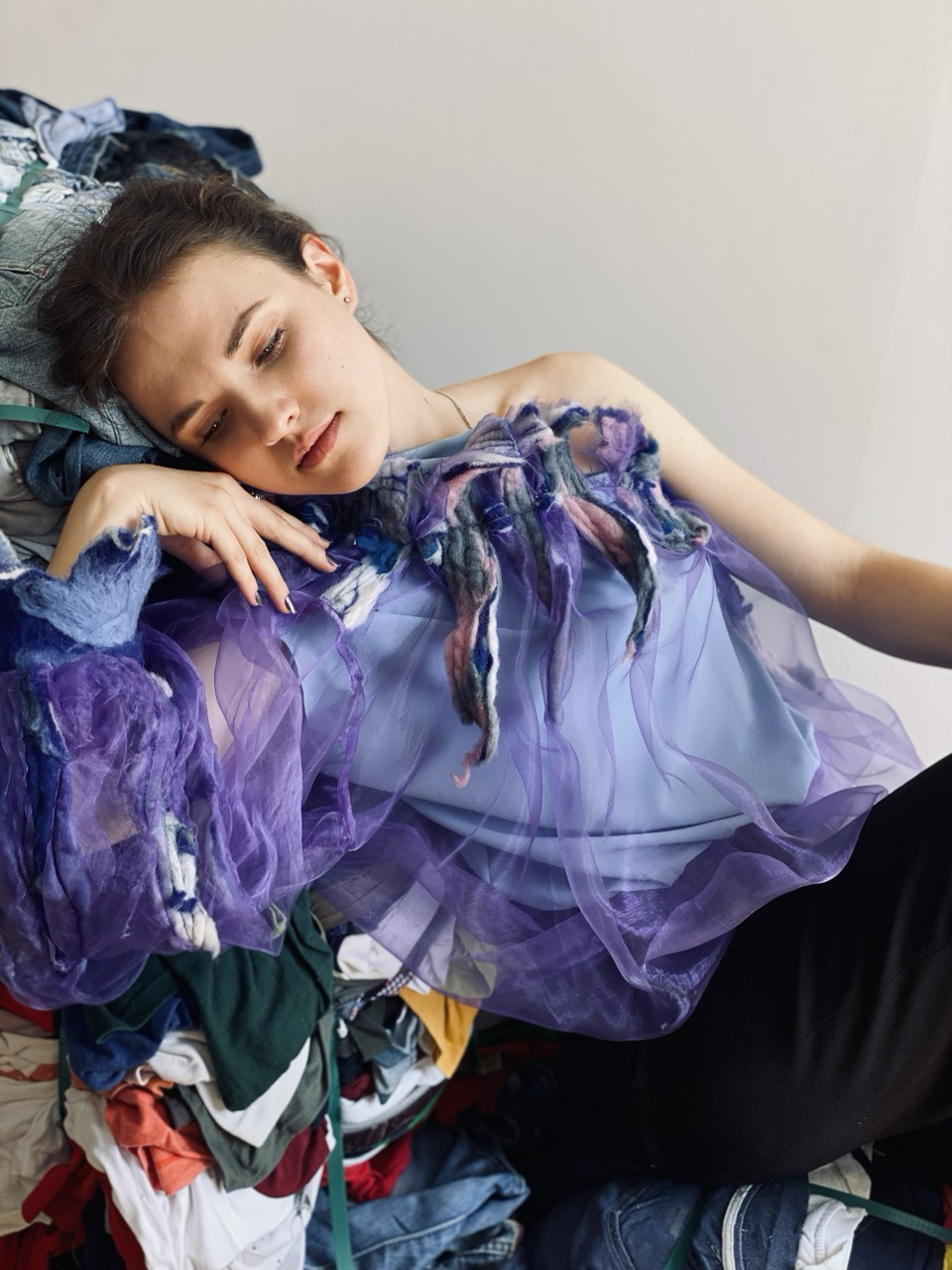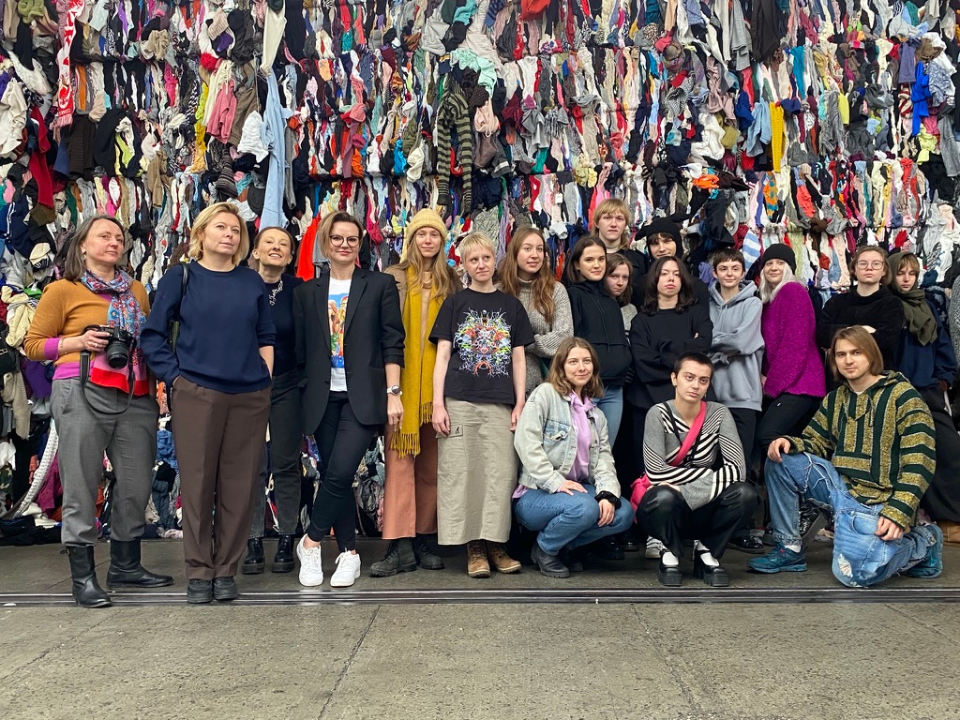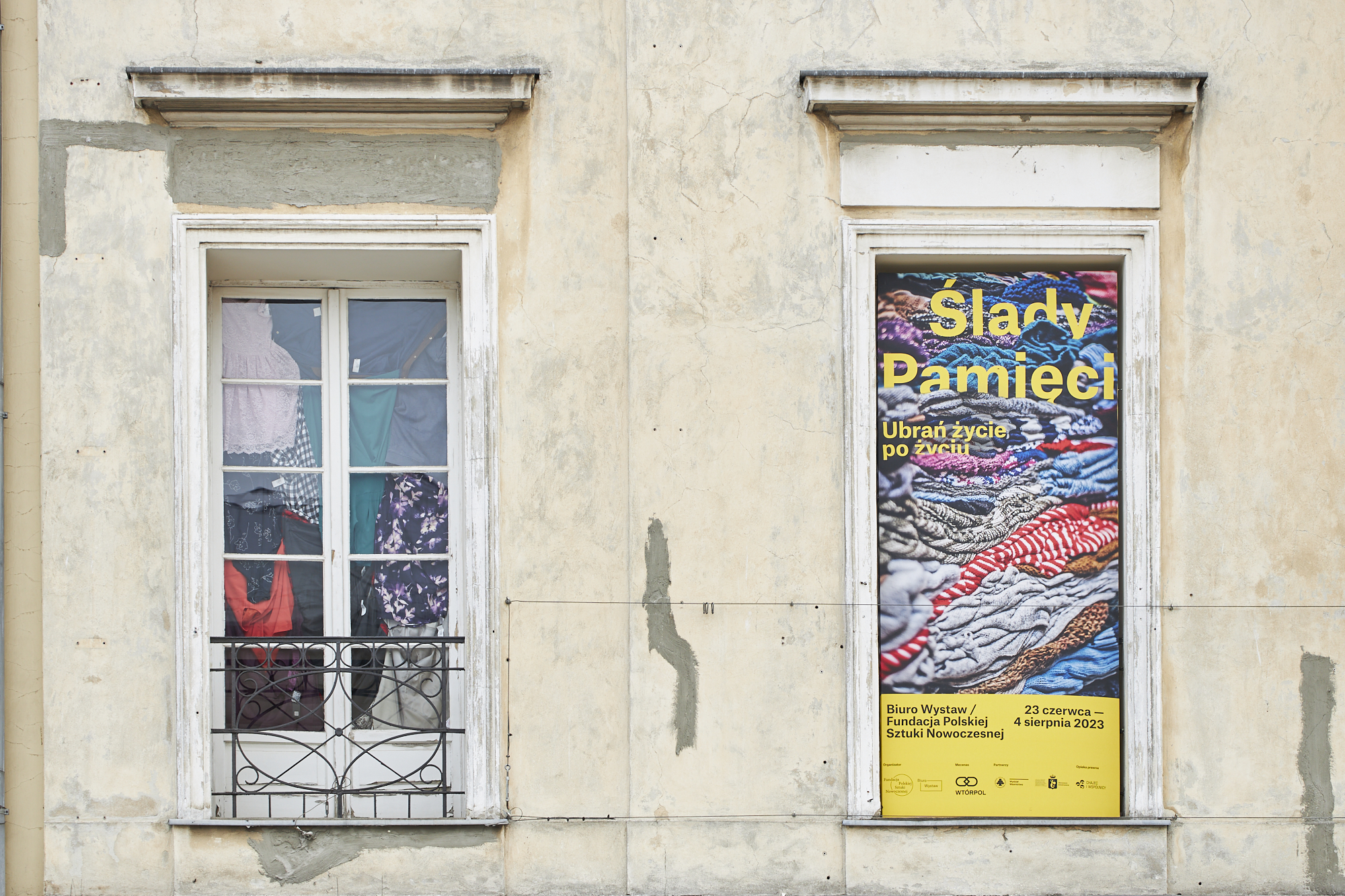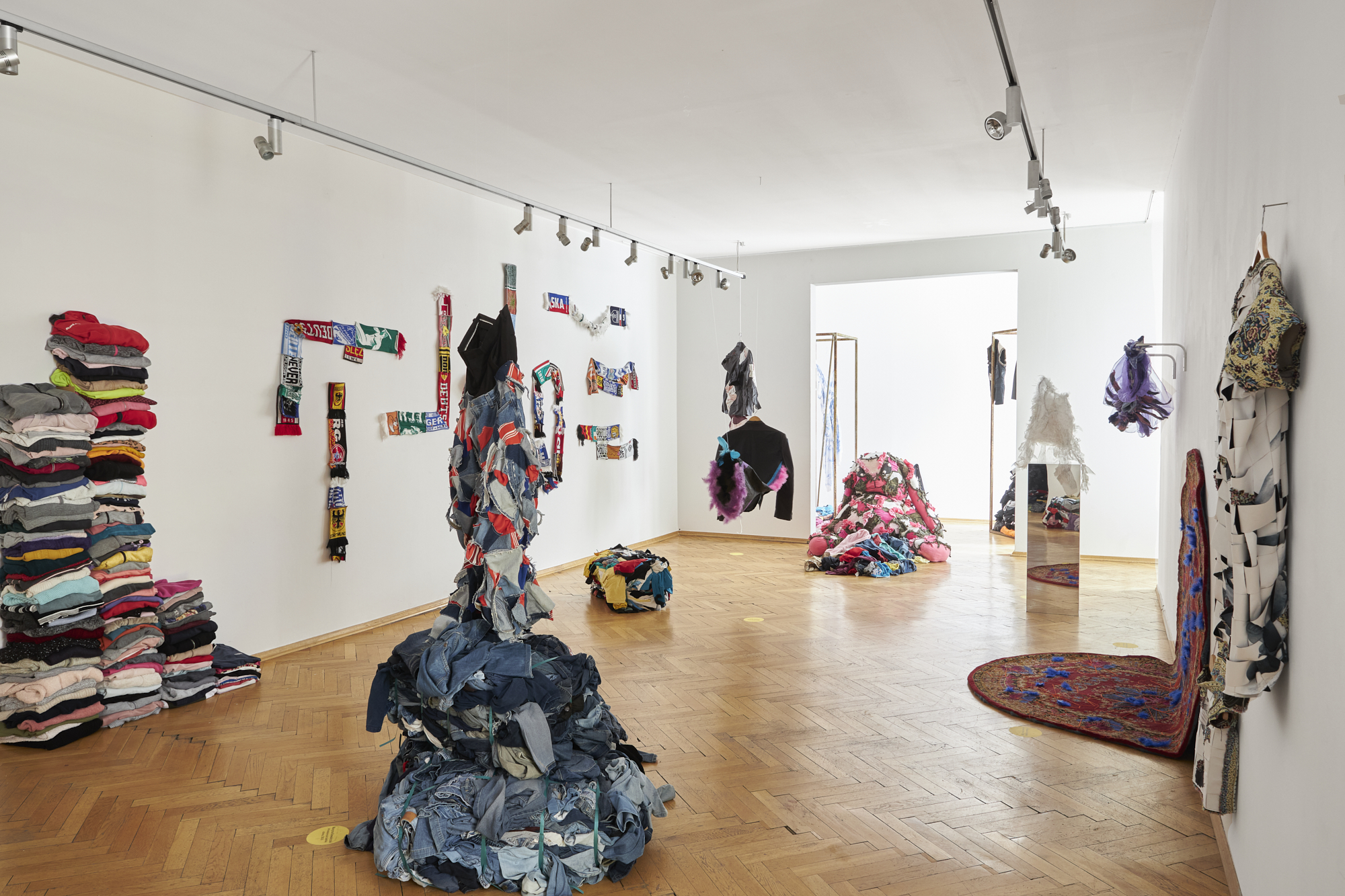The company Wtrórpol, operating under the motto “Give a Second Life to Clothing,” has entrusted us with the implementation of yet another project aimed at educating on the topic of secondary circulation. Opposing greenwashing and fast fashion trends, our client consistently encourages the promotion of upcycling, recycling, and a rational approach to shopping from an ecological perspective.
The goal of “Traces of Memory” (“Ślady Pamięci”) was to engage in activities at the intersection of fashion, education, and ecology. The strategic objective was the further establishment of Wtórpol’s image as a leader in the secondary circulation sector and a partner collaborating with both consumers and the fashion industry, extending beyond local recognition.
A few words about the Client
For over 30 years, Wtórpol has been introducing clothing into the secondary circulation obtained from containers placed throughout Poland. The owner of the largest clothing sorting facility in this part of Europe and a network of second-hand stores.
Clothing from the sorting facility is reintroduced into the second-hand market, primarily through a network of second-hand boutiques. Only as a last resort are items subjected to recycling (processed into industrial rags or alternative fuel). Since its inception, the essence of the company’s activities has been to combine two important CSR concepts – closed-loop economy and social business responsibility through charitable and educational initiatives.
The core of Wtórpol’s educational activities revolves around spreading awareness of the threats posed by the inundation of unwanted clothing in the world. The company successfully conducts periodic educational campaigns in schools, promoting both environmental consciousness and the importance of responsible consumption.

Objectives and Challenges of the Project
The objective of the project was to organize a performative exhibition promoting the concept of secondary circulation. In this way, we aimed to reinforce Wtórpol’s image as a leader in the secondary circulation sector and a partner collaborating with both consumers and the fashion industry. Additionally, our goal was to extend beyond local and industry-specific recognition. We aimed to reach a young audience interested in fashion, delivering an educational message about secondary circulation and highlighting the scale of the overconsumption phenomenon.
We sought to engage the academic and fashion communities while simultaneously reaching new audiences with an educational message about the secondary circulation of clothing. The message was centered around presenting the threats posed by excessive consumption, providing knowledge about what happens to garments from production to the end of their lifecycle, and, most importantly, fostering a sense of responsibility among young people—both consumers and designers.
The main message, built on the axis of art – fashion – ecology, was intended to have a clear educational emphasis: “the world of fashion is heading in a detrimental direction, and its positive change lies in the hands of young people and future designers, with Wtórpol being their support in this transformation.”
Undoubtedly, the entire project posed a significant challenge for us due to the extensive preparations required. We had to establish collaboration with the Academy of Fine Arts (ASP), engage designers and artists, find a venue suitable for the exhibition’s needs, and garner media interest in the topic—all within a limited budget. The project demanded careful planning and resourceful solutions to bring the educational message to the forefront effectively.

Implementation of the Project
During the several months of working on the project, we were responsible for:
- establishing collaboration with the Fashion Department at the Academy of Fine Arts (ASP) in Warsaw
- arranging a field trip for students and artists to Wtórpol’s sorting facility
- coordination of the exhibition vernissage
- communication of the project in traditional media
The project implementation can be divided into 3 stages:
Stage 1 – Visit to the Sorting Facility
Students from the Fashion Department were confronted with the realities of the global textile waste crisis by being invited to Wtórpol’s clothing sorting facility. Here, hundreds of tons of clothing are sorted daily. The goal was for them to witness firsthand how much clothing is discarded by Poles and to truly understand the issue of textile waste pollution in Poland. During the visit to the sorting facility in Skarżysko-Kamienna, the aspiring designers gained insights into practical approaches to designing fashion with a circular mindset, aiming to minimize its negative impact on the environment. The encounter with the enormity of the issue was intended to serve as a stimulus for their artistic creativity. Representatives from the academic and media communities were also invited to participate in the trip. During the visit, all guests not only confronted the scale of the issue but also had the opportunity to stand at the sorting line and engage in the work that hundreds of people do every day, allowing them to tangibly feel the inundation of unnecessary clothing.

Stage 2 – Educational Process, Creative Process
Throughout the entire semester of the project, instructors conducted creative workshops with students focusing on fashion and art theory, dedicated to the metaphors of memory and their presence in artistic actions and visual art objects. Students, immersing themselves in the stories of items found in the sorting facility, listening to the fabric they were made of, examining the form of clothing, and confronting their own memories and imagination, were tasked with creating their own artistic expression.
The project’s progress was documented in real-time by visual artist Kinga Kiełczyńska and was also covered by invited media outlets such as Radio Kampus and Vogue Polska. As a result of the collaboration with the Academy of Fine Arts (ASP), a representative from Wtórpol (Monika Lipnicka) was invited to be part of the committee evaluating the final-year diploma projects of the Fashion Department students. The evaluation was conducted through the prism of criteria derived from her expertise in upcycling, recycling, and ecology.
Stage 3 – Culmination of the Project. Exhibition “Traces of Memory. Life After Life of Clothes.” (“Ślady pamięci. Ubrań życie po życiu.”)
As part of the project, one of Wtórpol’s clothing containers was placed in the courtyard of the Academy of Fine Arts in Warsaw, opposite the University of Warsaw. To capture the attention of passersby and blend into the artistic atmosphere prevailing at the university, the container was specially decorated by graphic designer and ASP lecturer Dominika Wirkowska-Raczkowska. This was one of many elements designed to attract the attention of the student and academic community to the “Traces of Memory. Life After Life of Clothes” (“Ślady pamięci. Ubrań życie po życiu.”) exhibition.

Exhibition
As the culmination of the several-month project, students, employing upcycling and recycling methods, created fashion silhouettes or everyday-use objects. The material for their work consisted of clothing found in the sorting facility, each with its own unique story. The results of their efforts were showcased for two months in the form of a performative exhibition at the Exhibition Office of the Modern Art Foundation gallery on Krakowskie Przedmieście in Warsaw.

Elements for constructing the exhibition’s scenography and displaying artifacts were built using used textiles sourced from Polish households, provided by Wtórpol. This served to immerse the audience in the issue of unwanted clothing. Throughout the entire duration of the exhibition, a film projection by Kinga Kiełczyńska accompanied the display, enhancing the overall experience for visitors.
Effects of our activities
Thanks to our communication efforts, the project resonated widely in nationwide media. We reached a young audience, particularly interested in fashion, spreading the educational aspect and encouraging discussions about secondary circulation. As part of our Media Relations activities, we reached over 20 high-quality media outlets, including K MAG, Nowy Marketing, Noizz, Ekoguru, Fashion Biznes, Artist’s Life, Radio Czwórka, Radio Kampus, Radio Dla Ciebie, Muzo.fm. The exhibition was gladly promoted by partners as well: ASP and Biuro Wystaw.

A significant recognition of our work is the nomination in the “Złote Spinacze” competition in the “Fashion and Lifestyle” category. We present the summary of our activities in a presentation prepared for the competition.
The results of the largest PR industry plebiscite in Poland will be announced during the awards ceremony on December 8th.